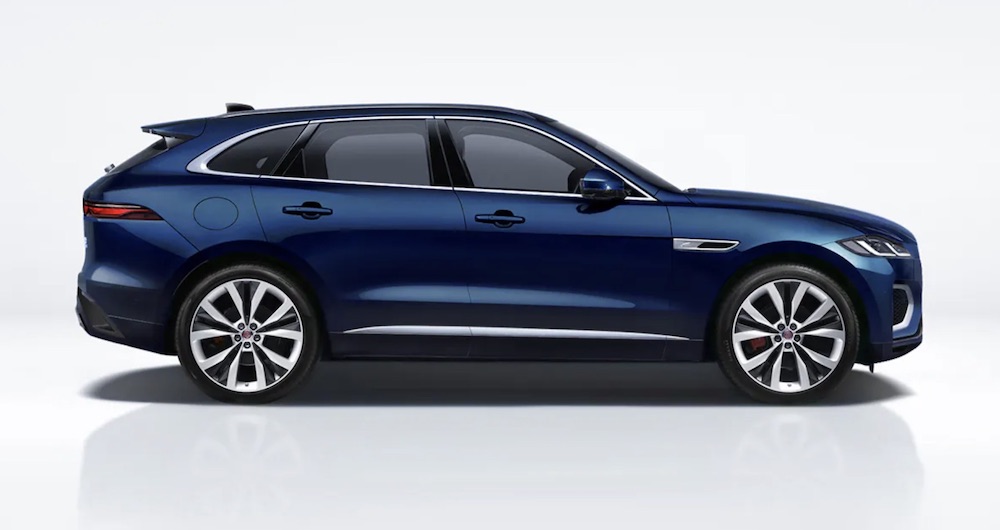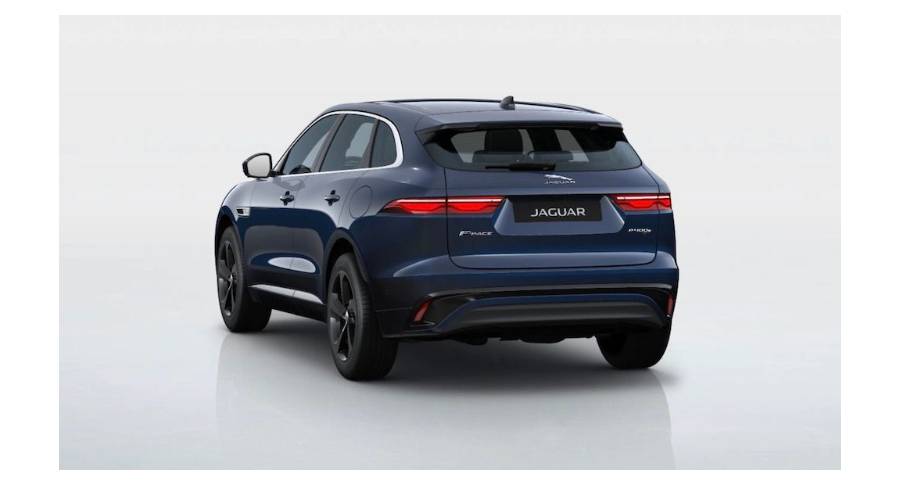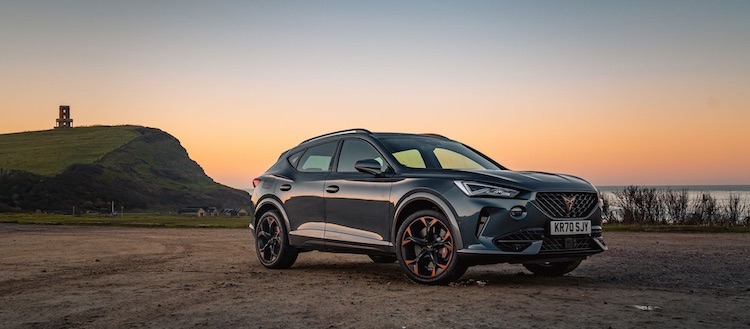Overview
Jaguar Land Rover (JLR) Automotive PLC is a leading luxury vehicle manufacturer with a distinctive reputation of being British and iconic. However the automotive company is now owned by the leading Indian industrial conglomerate, the Tata Group.
The blue chip, India headquartered company is a leading player in the automotive sector via its Tata Motors subsidiary based in Mumbai. Tata acquired Jaguar and Land Rover from Ford Motor Company in 2008. JLR continues to conduct its operations from Coventry in the United Kingdom.
Jaguar Cars was founded as the Swallow Sidecar Company in 1922, and has since been responsible for the development of a number of vehicles that have achieved a global iconic status, to include the famed Jaguar full-sized luxury saloon cars.
Electric Cars: The Basics
For those of you new to zero-emission electric driving, we recommend a read of the following articles:
Sign up to the e-zoomed Electric Living newsletter
The Jaguar F-PACE PHEV SUV
The conventional Jaguar F-PACE SUV was launched in 2016. Since then, Jaguar has also made this compact SUV available as a mild hybrid electric vehicle (MHEV) and a plug-in hybrid electric vehicle (PHEV).
If you are seeking luxury and performance, but with improved environmental credentials, the world of Jaguar plug-in electric cars is certainly worth considering. Of course, a premium badge does not come cheap, but the saving grace is the lower cost of driving using the pure electric mode in a PHEV.
The Jaguar F-PACE PHEV has a 17.1 kWh onboard EV battery, with a WLTP certified emission-free electric range up to 33 miles. Though the F-PACE PHEV range is considerably lower than the pure electric Jaguar I-PACE, the claimed 33 miles EV range is still useful and helps save money.
In the UK, 2/3rd of motorists drive at an average 30 miles or less a day. This should not come as a surprise, as the majority of our commutes are shorter distances i.e. grocery store, school-runs, high street, work etc. Even assuming a real-world range for the F-PACE PHEV closer to 27 miles, the EV can be used on a regular basis on the electric mode, which costs as little as 10 pence per mile, considerably lower than using petrol or diesel.
Moreover, the use of the EV mode will help improve the overall efficiency of the electric vehicle. The automotive manufacturer claims a fuel economy up to 127.3 mpg, but expect the real-world fuel economy to be lower. Nevertheless, there is much to gain in improved fuel economy from a PHEV, compared to a conventional petrol or diesel variant. However, if the majority of your driving is on motorways, with limited use of the e-mode, expect a fuel economy closer to 45 mpg.
To achieve the financial savings, charging the onboard EV battery on a regular basis is imperative. The Jaguar plug-in hybrid benefits from DC charging (not all PHEVs do!). You can charge up to 50 kW DC fast charging at public charging stations, to charge the EV battery from 0% – 80% in 30 minutes. Perfect amount of time for a coffee and stretch!
When charging at home, the EV can be charged via a 7 kW dedicated EV charger, overnight (up to 3 hours), when the electricity tariff rates are more attractive. We discourage the use of a 3-PIN domestic plug for charging an electric car.
The F-PACE P400e AWD PHEV combines a 2.0-litre (4-cylinder) turbocharged petrol engine with an electric motor. Despite the additional weight of the onboard EV battery, the EV delivers good performance. The F-PACE plug-in achieves 0-60 mph in 5.0 seconds (maximum power: 404 PS/ maximum torque: 640 Nm). The top speed of the e-SUV is 149 mph.
Both the exterior and interior of the EV are compelling, completed to a high quality standard and technical specification. The 12.3″ interactive driver display offers a variety of layouts, to include, full-screen 3D navigation, driving information etc. For an additional payment, there is also the head-up-display! In terms of practicality, the boot size of the PHEV is smaller (385 L) compared to the petrol variant, due to the placement of the onboard EV battery.
Jaguar offers a 8 years or 100,000 miles warranty and the electric vehicle has been awarded a Five-Star NCAP Safety Rating. The PHEV does not qualify for the UK government plug-in car grant (PiCG).
The EV is suitable for both families and company-car drivers. Company-car drivers can take advantage of the lower Benefit-in-Kind (BiK) tax rate for electric cars. Bottom-line, electric driving is good for the environment and the wallet.
You can lease electric vehicles (EVs) via e-zoomed at very competitive prices!
| PROS | CONS |
|---|---|
| Good looks and exterior styling | Expensive. Cheaper PHEV SUV alternatives available |
| Good infotainment system and high quality interior | Smaller boot space compared to rivals |
| Running on electric mode is cheap | Limited electric range |
The All-Electric Jaguar F-PACE PHEV SUV (credit:JLR)
| At A Glance | |
|---|---|
| EV Type: | Plug-In Hybrid Electric Vehicle (PHEV) |
| Body Type: | SUV |
| Plug-In Car Grant (PiCG): | Not Available |
| Engine: | Electric/ Petrol |
| Available In UK: | Yes |
| Variants (4 Options) |
|---|
| Jaguar F-PACE R-DYNAMIC S (from £60,420) |
| Jaguar F-PACE R-DYNAMIC SE (from £63,615) |
| Jaguar F-PACE R-DYNAMIC HSE (from £67,035) |
| Jaguar F-PACE R-DYNAMIC Black (from £63,660) |
| EV Battery & Emissions | |
|---|---|
| EV Battery Type: | Lithium-ion |
| EV Battery Capacity: | Available in one battery size: 17.1 kWh |
| Charging: | 50 kW DC charging (0%-80%: 30 minutes). Onboard charger: 7 kW AC (0%-100%: 3hrs) |
| Charge Port: | Type 2 |
| EV Cable Type: | Type 2 |
| Tailpipe Emissions: | 50g (CO2/km) |
| EV Battery Warranty: | 8 years or 100,000 miles |
| Average Cost Of Residential Charging | |
|---|---|
| Battery net capacity : 8.8 kWh | £1.27 |
| Battery net capacity : 11.6 kWh | £1.67 |
| Battery net capacity : 12.0 kWh | £1.73 |
| Battery net capacity : 13.10 kWh | £1.89 |
| Battery net capacity : 14.10 kWh | £2.03 |
- Note 1: The average cost of residential electricity in the UK varies depending on the region, supplier and type of energy used. An average for the UK is 14.40 p/kWh.
- Note 2: Not all EV manufactures make available the data on net EV battery capacity, and in a number of instances the EV battery capacity advertised, does not state if it is gross or net capacity. In general, usable EV battery capacity is between 85% to 95% of the gross available capacity.
| Charging Times (Overview) | |
|---|---|
| Slow charging AC (3 kW – 3.6 kW): | 6 – 12 hours (dependent on size of EV battery & SOC) |
| Fast charging AC (7 kW – 22 kW): | 3 – 8 hours (dependent on size of EV battery & SoC) |
| Rapid charging AC (43 kW): | 0-80%: 20 mins to 60 mins (dependent on size of EV battery & SoC) |
- Note 1: SoC: state of charge
| Dimensions | |
|---|---|
| Height (mm): | 1664 |
| Width (mm): | 2071 |
| Length (mm): | 4747 |
| Wheelbase (mm): | 2874 |
| Turning Circle (m): | 11.59 |
| Boot Space (L): | 385 |
| P400e AWD Automatic PHEV | |
|---|---|
| EV Battery Capacity: | 17.1 kWh |
| Pure Electric Range (WLTP): | 33 miles |
| Electric Energy Consumption (Wh/km): | 217.7 |
| Fuel Consumption (mpg): | 127.3 |
| Charging: | 50 kW DC charging (0%-80%: 30 minutes). Onboard charger: 7 kW AC (0%-100%: 3hrs) |
| Top Speed: | 149 mph |
| 0-60 mph: | 5.0 seconds |
| Drive: | All-wheel drive (AWD) |
| Electric Motor (kW): | 105 |
| Max Power (PS): | 404 |
| Torque (Nm): | 640 |
| Transmission: | Automatic |
| Seats: | 5 |
| Doors: | 5 |
| Unladen Weight-EU (kg): | 2,189 |
| Colours: | 11 |
| NCAP Safety Rating: | Five-Star |
While e-zoomed uses reasonable efforts to provide accurate and up-to-date information, some of the information provided is gathered from third parties and has not been independently verified by e-zoomed. While the information from the third party sources is believed to be reliable, no warranty, express or implied, is made by e-zoomed regarding the accuracy, adequacy, completeness, legality, reliability or usefulness of any information. This disclaimer applies to both isolated and aggregate uses of this information.











































